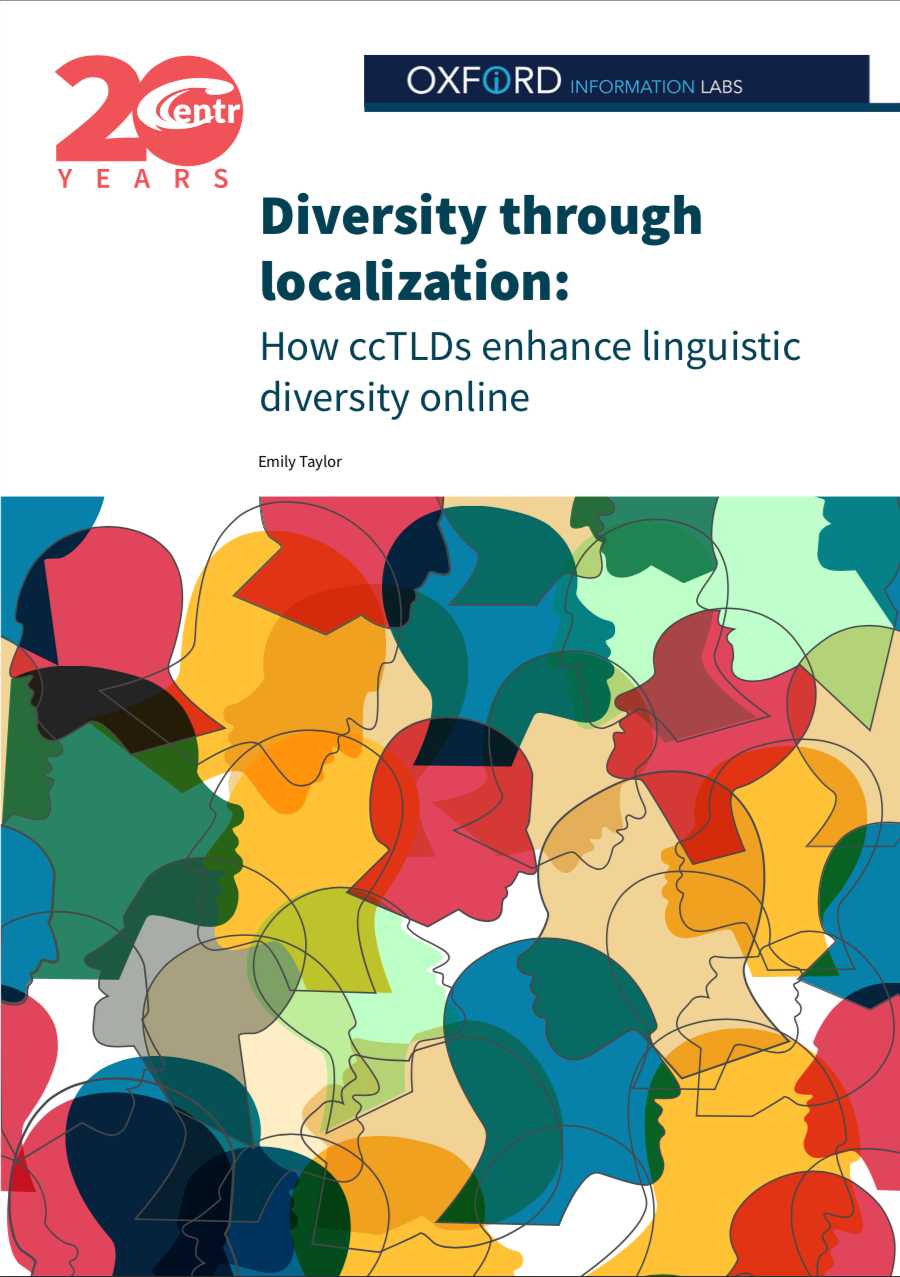
Description
A CENTR 20th Anniversary paper testing the hypothesis that ccTLDs support local languages.
Blog summary
The world’s websites speak English. There are more than 6,000 languages1 spoken in the world, but online English is stubbornly popular, the language of 54% of web pages. Major world languages such as Arabic and Hindi, with more than a billion speakers offline, are barely represented in web pages.
As part of CENTR’s 20th anniversary celebrations, CENTR requested Oxford Information Labs to test the hypothesis that ccTLDs support local languages. Thanks to the cooperation of CENTR members, Oxford Information Labs has been given unprecedented access to zone files and language analysis for 16.4 million geographic domain names.
CENTR members and associate members collectively manage 80% of all registered country code domain names worldwide3. Many were set up during the 1990s, prior to the commercialization of domain name markets. The majority were set up to reflect the ethos of the early internet, as expressed in RFC 1591, that ccTLD managers are ‘trustees for the delegated domain and have a duty to serve the community’4. That sense of service to local internet communities naturally includes operating and supporting local languages.
About this Blog
Publisher
CENTR
File type
PDF
File size
1387k
Page count
14
First published on
Invalid Date

